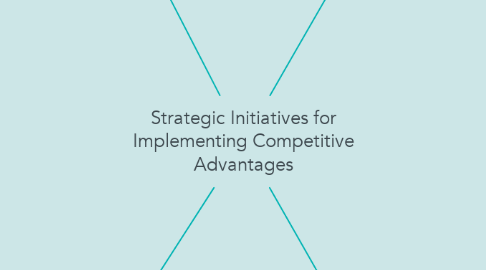
1. Customer relationship management (CRM)
1.1. Definition
1.1.1. (CRM) – involves managing all aspects of a customer’s relationship with an organization to increase customer loyalty and retention and an organization's profitability.
1.2. Opportunities
1.2.1. Identify types of customers
1.2.2. Understand customer buying behaviors
1.2.3. Treat each customer as an individual
1.2.4. Design individual customer marketing campaigns
1.3. Typical Usage
1.3.1. Sales
1.3.2. Marketing Campaign
1.3.3. Customer profiling
1.3.4. After Sales Services
1.3.5. Advanced Data Mining
2. Enterprise resource planning (ERP)
2.1. Definition
2.1.1. (ERP) – integrates all departments and functions throughout an organization into a single IT system so that employees can make decisions by viewing enterprise wide information on all business operations.
2.2. Opportunities
2.2.1. Integrate planning, purchasing inventory, sales, marketing, finance, human resources, and more in a single system.
2.2.2. With ERP software, each department still has its system, but all of the systems can be accessed through one application with one interface.
2.2.3. Allow the different departments to communicate and share information more easily
2.2.4. Help a corporation become more self-aware by linking information about the production, finance, distribution, and human resources together.
2.2.5. its ability take the many different forms of data from across the different organizational systems and correlate, aggregate, and provide an enterprisewide view of organizational information
3. Supply Chain Management
3.1. Definition
3.1.1. (SCM) – involves the management of information flows between and among stages in a supply chain to maximize total supply chain effectiveness and profitability
3.2. Basic Compenents
3.2.1. Supply Chain Strategy
3.2.2. Supply Chain Partner
3.2.3. Supply Chain Operation
3.2.4. Supply Chain Logistics
3.3. Opportunities
3.3.1. Create entry barriers
3.3.2. Increase switvhing costs
3.3.3. Increase its own supplier power
3.3.4. Decrease the power of its buyer
4. Business process reengineering (BPR)
4.1. Definition
4.1.1. (BPR) – the analysis and redesign of workflow within and between enterprises
4.2. Principles
4.2.1. Organize around outcomes, not task
4.2.2. Identify all organization process
4.2.3. Integrate information
4.2.4. Treat geographically dispersed resources as tho they were centralized
4.2.5. Link parallel activities in the work flow
4.2.6. Put the decision point where the work is perform
4.2.7. Capture the information once and at the sources
4.3. Opportunities
4.3.1. BPR looks at taking a different path, such as an airplane which ignore the road completely
4.3.2. Eg: Progressive Insurance improved service to its customers by offering a mobile claims process
4.3.3. A true BPR effort does more for a company than simply improve it by performing a process better, faster, and cheaper
